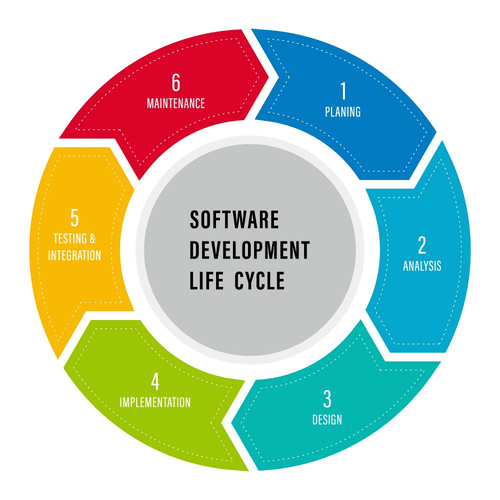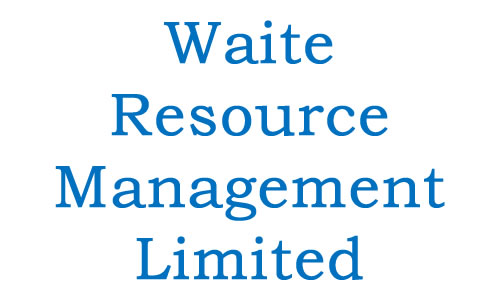The core of the project is to help small and medium sized enterprises in the software business to develop their operations using international software process models. In the first phase of the project eight small software organisations are participating to improve their software processes. The project uses mainly ISO/IEC TR as the software process assessment and improvement framework. The second edition has been greatly expanded with new chapters on documentation control, product data management, SCM standards and software process improvement models like CMM, CMMI, BOOTSTRAP, ISO SPICE, and Trillium. The SPI for SMEs based on the CMMI framework can improve engineer’s productivity and give them required awareness for accelerating the process to improve organizational business value. This framework did not fully take the advantages of agile methods and did not cover any of the CMMI levels 4 and 5 KPAs practices.
The history and evolution of software supply chains – Supply Chain Management Review
The history and evolution of software supply chains.
Posted: Thu, 18 May 2023 12:15:19 GMT [source]
Refactoring to Patterns reflects three years of refinement and the insights of more than sixty software engineering thought leaders in the global patterns, refactoring, and agile development communities. Whether you’re focused on legacy or “greenfield” development, this book will make you a better software designer by helping you learn how to make important design changes safely and effectively. The Second Edition of this volume provides a detailed, step-by-step plan for implementing quality assurance programs that emphasize software testing. This focus on software QA techniques enables organizations to minimize the high cost of IT maintenance. The summary of software testing and maintenance tools has been completely updated. Defining and Deploying Software Processes provides expert guidance that allows you to create efficient and effective processes that let you better manage project schedules and software quality.
ISO-15504
To do this, the book defines a core Agile subset, so those of you who want to “get Agile” need not spend years learning to do it. Instead, you can simply read this book and apply the core subset of techniques. The book follows a real-life .NET/C# project from inception and UML modeling, to working code–through several iterations. Aimed particularly at embedded designers and developers, this new book provides a sound foundation on the TPM, helping them to take advantage of hardware security based on sound TCG standards. It covers all the TPM basics, discussing in detail the TPM Key Hierarchy and the Trusted Platform Module specification. The book presents a methodology to enable designers and developers to successfully integrate the TPM into an embedded design and verify the TPM’s operation on a specific platform.
- This is the last in a four-book series comprising a critical review of the Unified Process that includes a survey of the alternate software processes and the synthesis of a more robust process.
- Where configuration management and development professionals go for answers on SCM, ALM, change management, DevOps, tools and more.
- The TMap Test Management approach is based on years of practical software testing experiences and developed by the R&D department of IQUIP Informatica B.V. It enjoyed an overwhelming interest from its first publication in Dutch in 1995.
- SPI took a long time and it is a costly process while It is necessary if you have issues as discussed before.
TSP was initially a CMMI Level 5 activity, meaning that it was intended for organisations that had reached CMM Level 5. Currently, TSP is recommended for CMMI level 2 and above, and is increasingly been seen as a driver for process improvement and a tool for achieving CMMI levels. In the 80’s the ISO moved into the standardisation of organisational practice and trade.
Converting classes to database tables
Consequently, the organization may need to use more approaches and the decision has to be made how the chosen approaches have to be used simultaneously. When we use the term standard we refer to the materials officially standardized and published by standardization organizations. Such international standardization organizations are e.g. the International Organization for Standardization , Institute of Electrical and Elec- tronics Engineers or International Electrotechnical Commission . To a school, organization, company or government agency, where Pearson collects or processes the personal information in a school setting or on behalf of such organization, company or government agency.

It defines procedures for the systematic evaluation, coordination, approval or disapproval, and implementation of all changes to the software configuration. This book is a basic introduction to measurement and the validation and use of metrics. With the same insight and authority that made their book The Unix Programming Environment a classic, Brian Kernighan and Rob Pike have written The Practice https://globalcloudteam.com/glossary/software-process-improvement/ of Programming to help make individual programmers more effective and productive. This indispensable guide prepares inexperienced managers for the realities of today’s fast-paced business environment, providing real-world information that helps readers move comfortably into their new managerial positions. Use Ruby and you’ll write better code, be more productive, and enjoy programming more.
The SPICE document suite
Agile approaches are business practices with a proven track record for helping organizations achieve greater efficiency, higher-quality outputs and increased customer satisfaction. Poor quality continues to bedevil large-scale development projects, but few software leaders and practitioners know how to measure quality, select quality best practices, or cost-justify their usage. In The Economics of Software Quality, leading software quality experts Capers Jones and Olivier Bonsignour show how to systematically measure the economic impact of quality and how to use this information to deliver far more business value. Using agile methods and the tools of Visual Studio 2010, development teams can deliver higher-value software faster, systematically eliminate waste, and increase transparency throughout the entire development lifecycle.

Fully updated to cover the latest tools and techniques, Applied Software Measurement, Third Edition details how to deploy a cost-effective and pragmatic analysis strategy. CMMI-ACQ® (Capability Maturity Model® Integration for Acquisition) describes best practices for the successful acquisition of products and services. Many organizations use Capability Maturity Models® (CMMs®) to assess development and maintenance processes, implement https://globalcloudteam.com/ improvements, and measure progress. Although consistent in purpose, these models differ in terminology and design–enough sometimes to cause conflict and confusion when used within the same organization. This document includes an overview of process improvement, a methodology for process improvement, the required cultural aspects for successful process improvement and the management perspective of process improvement.
thoughts on “The Software Process Improvement (SPI) – Reward or Risk”
It was mentioned before that the SPI project is a change management project which is not dealing only with the process, it affects people and the organizational culture. As you may have noticed that management commitment and leadership support are considered the most common factors across the SPI process, losing that commitment and support will demotivate the people involved in the SPI project and it will fail. Being certified in CMMI for example, can put the company in higher competitive edge and make it gain more sales due to the evidence of existing mature software process based on standard method. Because of IPD-CMM’s focus on organisations practicing with project teams, several interviews where conducted by the Cusick organisation in the industry to investigate good and bad implementations of integrated product development. The goal of this research was to acquire an understanding of the benefits gained and problems confronted with in relation to IPD-CMM implementations. The result of these findings were collected in a database and published by Cusick.

In the following discussion with the company management the scope and sequence of process assessments is derived from the priorities. Selected processes are assessed with process specific assessments, which provide capability ratings and detailed improvement ideas. Small software companies are usually very flexible, continuously, and often even spontaneously changing organisations. To arouse the interest of the small company management an investment in SPI has to pay back in months. Ankit Agarwal, Tamannah Sharma, Divya Goel, Avni Jindal, “ Study and comparison of software process improvement”, International Jouranal Of Advanced Research in Computer Science and Software Engineering, Vol 2, Issue 6, June 2012. Gerard o’ Regan, “Introduction to software process improvement”, Springer, undergraduate topics in computer science, 2011.
Software Process Improvement and Capability Determination (SPICE)
It aims to increase the agility to its process and to keep its maturity level or it suits to any organization which has already applied the Scrum and seeks to reach at the CMMI level 2 or 3 maturity and want to keep its current agility. Additionally, the model can be used by those organizations which are interested in improving their processes with the CMMI and the Scrum and have already applied either of them partly14. Differences in structure and granularity also exist between quality approaches, e.g. both CMMI for Services and ITIL focus on services.
Learn proven, real-world techniques for specifying software requirements with this practical reference. It details 30 requirement “patterns” offering realistic examples for situation-specific guidance for building effective software requirements. Each pattern explains what a requirement needs to convey, offers potential questions to ask, points out potential pitfalls, suggests extra requirements, and other advice.
A Software Process Improvement Model for Small Firms in Developing Countries
Software process improvement in small enterprises or business units requires special attention when applying models and standards, which usually have been designed from the viewpoint of large organisations. Both models contain guidance for continuous software process improvement and have stepwise models to develop SPI programmes. The software testing process is the way in which people, tools, methods, measurements, and equipment are integrated to test a software product. This book offers a toolbox for the practical implementation of the testing process and how to improve it.


Leave A Comment